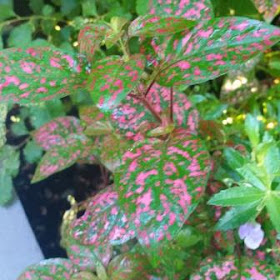What was one of Mahatma Gandhi's favorite foods?
What did Henry Thoreau eat while residing at Walden Pond?
PURSLANE.
Purslane, long considered an obnoxious weed in the U.S., is, in fact, full of vitamins, minerals and fatty acids! And now this overlooked gem,
'one of the most nutritious greens in the world',
is receiving the attention it is due.
Usha Palaniswamy of the Department of Plant Science, University of Connecticut, reports that,
"Purslane is receiving much attention for cultivation by the United States Department of Agriculture as part of their effort to bring about a modification in the western diet with increased intake of fresh fruits and vegetables."
Purslane contains a high concentration of alpha-linolenic acid (ALA), one of the highly sought-after Omega-3 fatty acids. It has several times the concentration of ALA than is found in spinach. So throw away those fish oil capsules and grow your own Omega-3 fatty acids! It literally grows like a weed.
Addiitonally, Purslane stems are high in vitamins A and C. And it provides all of this wellness with only 15 calories in a 100-gram portion (as compared with 76 in a boiled potato).
Purslane (Portulaca oleracea) is a member of the Portulacaceae Family and is also known as wild portulaca and verdolaga. It grows all over the world, often in disturbed soil in sunny areas.
This low growing, fleshy leaved plant is native to Persia and India and was said to have been introduced into Europe by Arabs in the 15th century as a salad herb. But it was actually widely used in ancient Greece where Theophrastus (in the 4th century BC) named purslane, (called andrákhne) as one of the several summer pot herbs that must be sown in April.
In traditional Chinese Medicine, it is used to treat infections or bleeding of the genito-urinary tract as well as dysentery.
And the Japanese use Purslane as one of the seven herbs in their symbolic New Year's ritual dish called nanakusa-no-sekku (七草の節句).
Purslane has been eaten for generations as a treatment for arthritis, inflammation and heart disease and to promote general good health.
WOW! and you always pull it up and toss it away, yes?
Purslane is a tender annual and a perennial in USDA zones Zone 9 -11. It has prostrate reddish stems and succulent leaves that are smooth, paddle shaped and about a half inch long. It has tiny yellow flowers about 3/16 of an inch open when the sun shines, followed by small dark colored seeds. When foraging for purslane, watch out for spurge, a poisonous plant that grows in similar conditions to purslane. Snap a stem to confirm your identification. If there’s white, milky sap inside the stem, you might have picked spurge – discard it.
Purslane stems are filled with clear water. Purslane stems are also thick, while spurge has a wiry stem.
Always check with someone who knows before you pull weeds and eat them.
Waterconscious gardeners will love its drought and salt tolerant qualities. Purslane has little to no disease problems in well-drained soil. You can pinch it back as it grows to maintain a bushy low plant.
Purslane provides cover to create a humid microclimate for nearby plants. Its deep roots bring up ground moisture that other plants can use, and some, including corn, will "follow" purslane roots down through the hard soil. Deep rooted 'weeds' like Purslane are extremely beneficial because they bring up needed minerals and nutrients from the depths of the ground.
This edible plant has a refreshing tart taste and grows from late spring to fall. I just pulled some up yesterday. You can eat Purslane raw in salads (it has a crispy texture and a peppery taste). It can also be sauteed as a side dish or boiled - boiling will remove the tartness.
Bake it with breadcrumbs as a casserole. Use it in place of okra in recipes. Add it to omelets. Purslane is eaten extensively in soups and salads throughout the Mediterranean area. The Russians dry it and can it for the winter. In Mexico it is called VERDOLAGA.
Star chef Steve Johnson has a Purslane cooking recipe for cucumber-yogurt salad (you can view his recipe for purslane at the Star Chefs Web site).
The wild Purslane is best for eating as the new cultivars are bred for flowers rather than taste and nutrition. But if you want to use the snazzy flowers of cultivated Purslane in your edible landscape try the new flowering series from Israel - Purlsane Pazazz.
Pazazz Purslane makes a great long lived spiller in combination planters for hot sunny spots. It is very forgiving, tough and needs little water. It comes in a variety of fabulous bright colors -
Red Flare, Salmon Glow, Pink Glow and Ultra Pink. They all glow in an iridescent manner.
But I wouldn't eat them.....
Thoreau wrote of Purslane:
"I have made a satisfactory dinner off a dish of purslane which I gathered and boiled. Yet men have come to such a pass that they frequently starve, not from want of necessaries, but for want of luxuries."
(so eat that Purslane!) - Jan
Here is a
great video about Purslane from Green Deane (
Eattheweeds -click here)














































